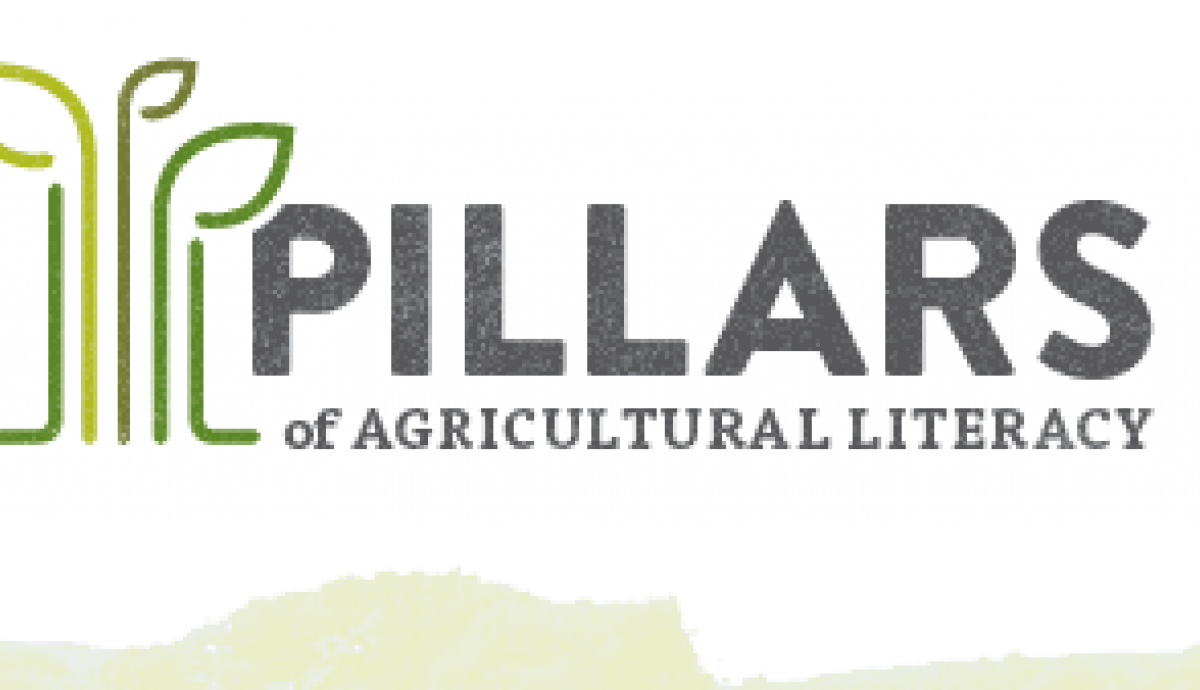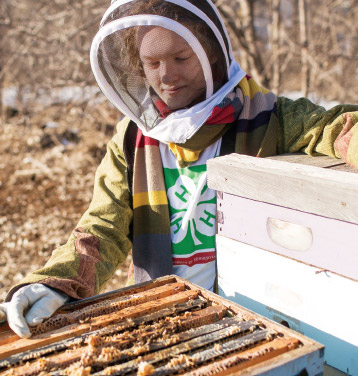Pillars in Practice an Ag Literacy Tool
In Minnesota, the 4-H Science of Agriculture Challenge is using the Pillars of Ag Literacy to help steer students in the right direction. We interviewed Joshua Rice, assistant Extension professor, about this project.

The American Farm Bureau Foundation for Agriculture developed the Pillars of Ag Literacy to help educators and education systems design curriculum and programs that would lead to agriculturally literate citizens.
In Minnesota, the 4-H Science of Agriculture Challenge is using the Pillars to help steer students in the right direction.
We interviewed Joshua Rice, assistant Extension professor, about this project:
Can you tell us about the Challenge?
In this challenge, youth explore and develop science-based solutions to agriculture-related issues they have identified in their communities. Youth teams work with local agriculture partners (mentors) to explore issues and find solutions to agricultural challenges. 4-H youth work on teams of 3-4 in grades 6-12 from October until June when they come to the state competition on the University of Minnesota’s St. Paul campus.
The teams take their research and information gathered and give a 20-minute demonstration, followed by 10 minutes of questioning from a panel of industry experts, all while competing for college scholarships. Scholarship prizes range from $1,000 for first place, $750 for second and $500 for third.
There are four primary goals of the Science of Agriculture Challenge:
- Increase youths' STEM awareness and excitement
- Develop 21st century skills (job skills)
- Increase agricultural literacy
- Expose youth to career opportunities in agriculture
Minnesota 4-H wants youth to understand that their involvement in 4-H can lead them to college and into a viable career in agriculture.
How do you use the Pillars of Ag Literacy?
When selecting an agricultural issue within their community, 4-H youth were presented with the Pillars of Agricultural Literacy to help them think about all aspects of agricultural sciences. When teams identified their topic, they were also required to identify which Pillar their topic would fall into. As teams progressed in their research, some of the youth realized that their topic may move from the original Pillar that they identified to a different Pillar. For example, some teams that selected the animal science Pillar initially would move into the economy Pillar as they learned more about their issue. By identifying the Pillars that the topics would fall under, it also allowed us to identify what sector we would need to use to identify judges.
Have the Pillars helped the program be successful?
The Pillars have definitely helped to make the Science of Agriculture Challenge a success. The Pillars help to educate youth and volunteers about the size and complexity of agriculture, and also the Pillars educate them about the various career opportunities that exist. People tend to think about agriculture from a production-only standpoint. The Pillars help to showcase that there is a lot more to agriculture.
How do you plan on using the Pillars in the future?
We will continue to share the Pillars with teams when they are in the process of identifying their topics for the 2016 event. We are hoping to increase the number of teams that we have for 2016 to at least 40 teams. Due to the 30-minute time requirement per team, we will need to have a preliminary round of judging to help control the time issues. We are planning to separate teams into the six Pillars of Ag Literacy and they will compete in those groups in front of a panel of judges with expertise in that agricultural sector. We will identity the top team in each Pillar and they will move on to the final round with a new set of judges that will have expertise in each of the Pillars.
We would like to move to having scholarships for the top three teams in each Pillar in the future. This would require us to have approximately $55,000 in scholarship money that would need to be raised each year. We are hoping to find sponsors to make this possible.
Did any of your students face any interesting challenges they needed to overcome?
The hardest challenges that the youth faced were identifying a topic that they felt was relevant and current and then finding the appropriate agriculture business and industry mentor to work with.
This is a new 4-H program and the first of its kind in the United States. During the event, the youth attend 21st century workshops, received educational resources and were provided with food and lodging, educational tours and scholarships. The University of Minnesota Extension Center for 4-H Youth Development is looking for corporate and industry partners to help provide funding and support to ensure that the Science of Agriculture Challenge continues to grow and reach more 4-H youth not only in Minnesota, but throughout the country.
Any final thoughts?
The Science of Agriculture Challenge is helping to fix the hole in the pipeline for agriculture careers. We are educating and growing tomorrow’s agricultural leaders. Youth need to be well informed and excited about the opportunities that agriculture has to offer. The 4-H youth of today are the agriculture innovators of tomorrow.
If you are available to be a mentor, or if your company is interested in supporting the University of Minnesota Extension Center for 4-H Youth Development, please contact Joshua Rice at jerice@umn.edu.
For more information visit here.
This is just one example of how the Pillars of Agricultural Literacy can help frame educational programs. If you are interested in learning more about the Pillars click here.











